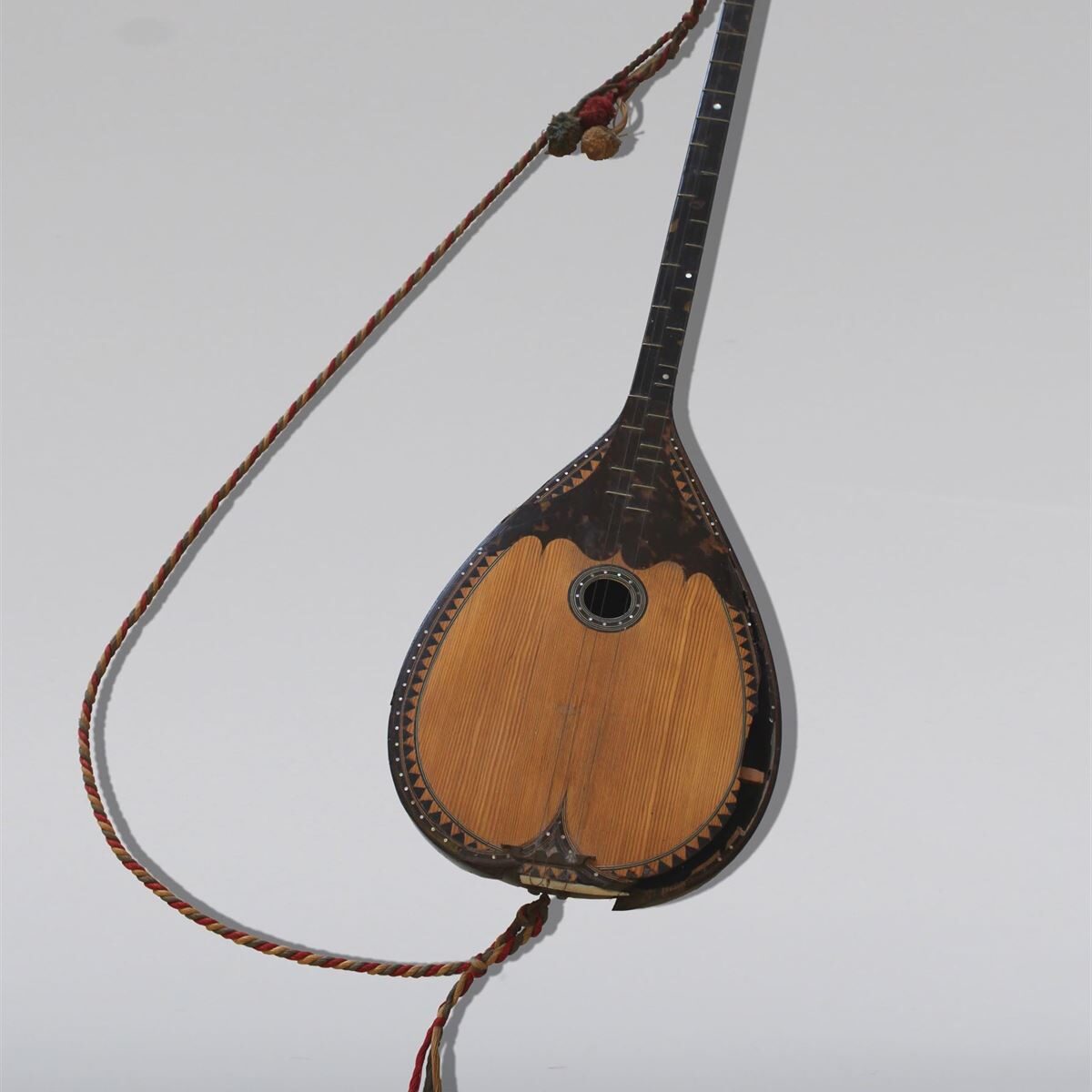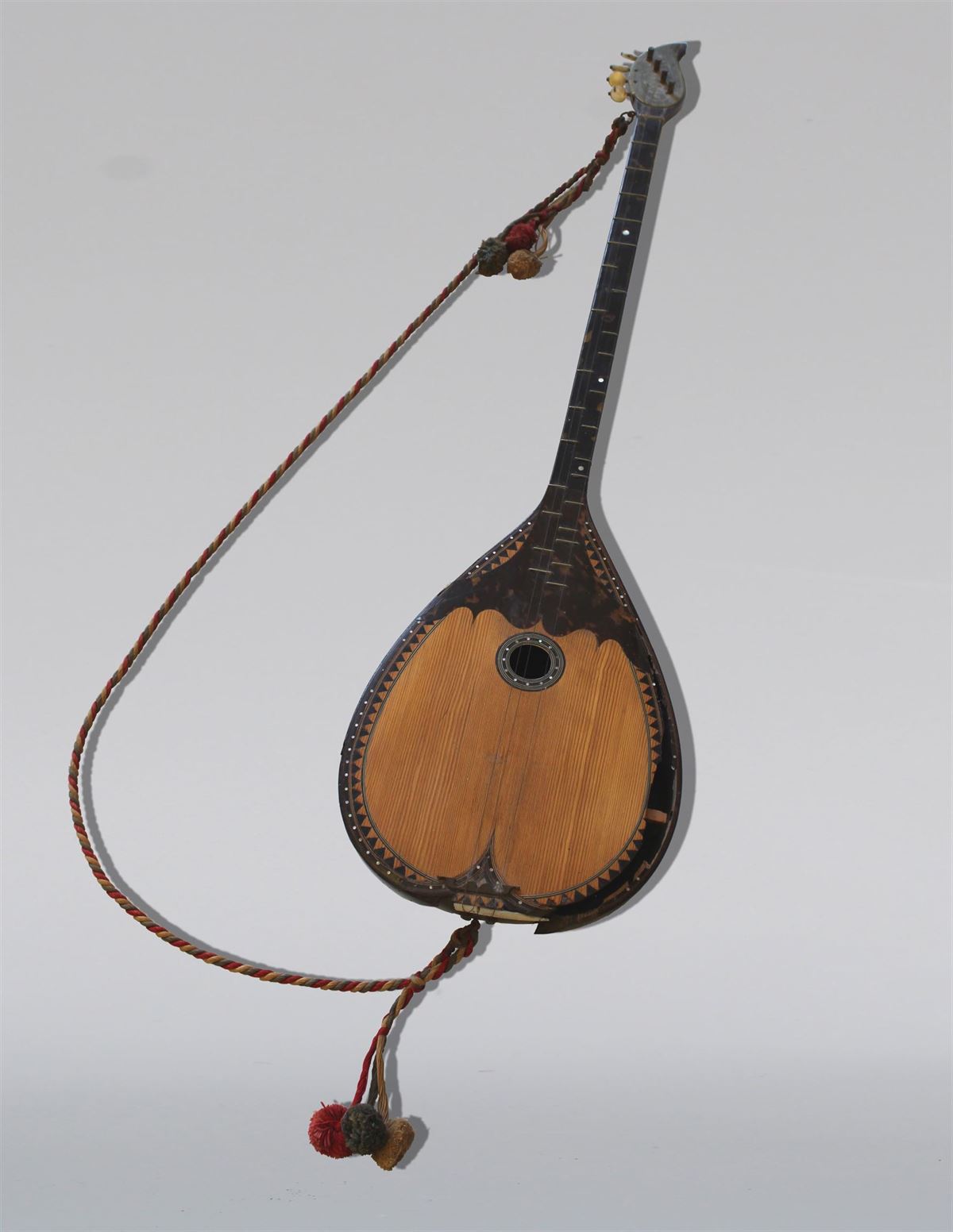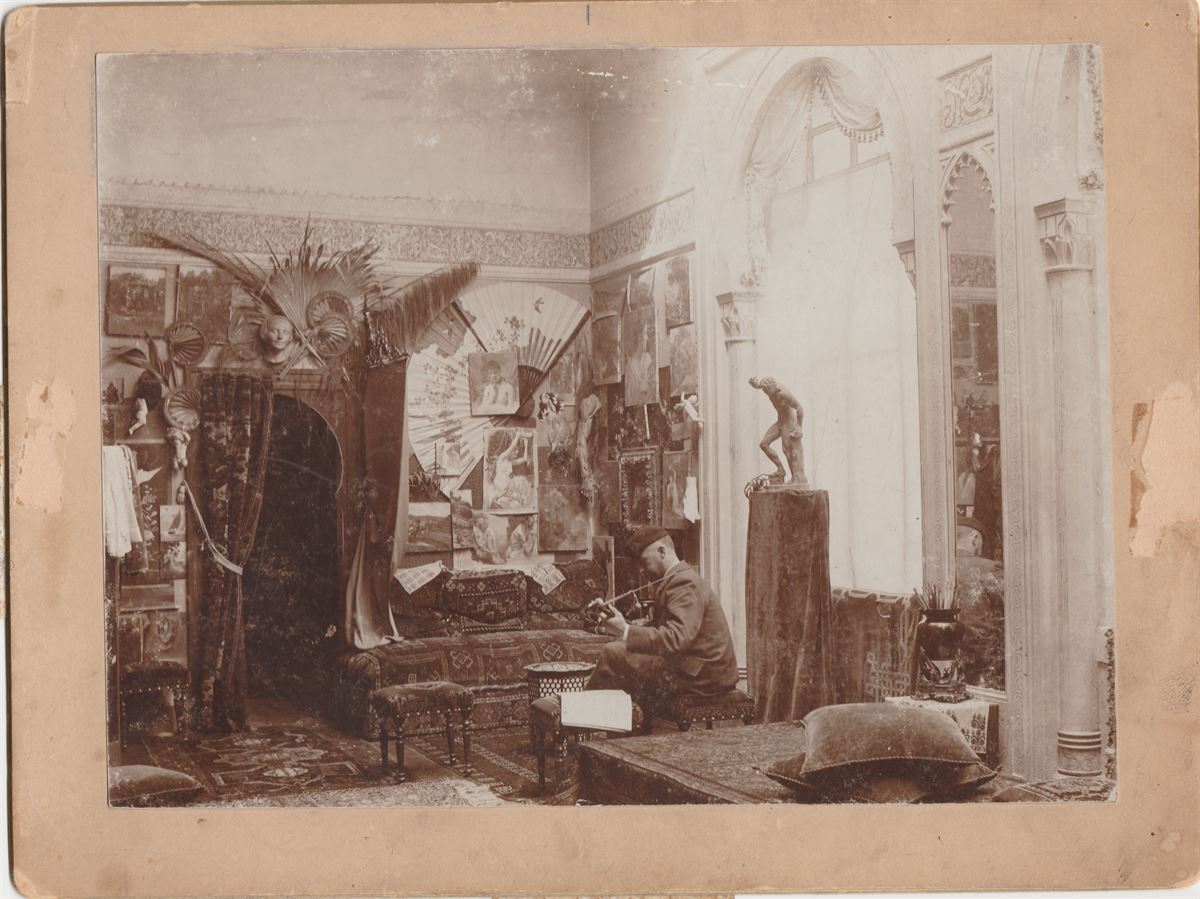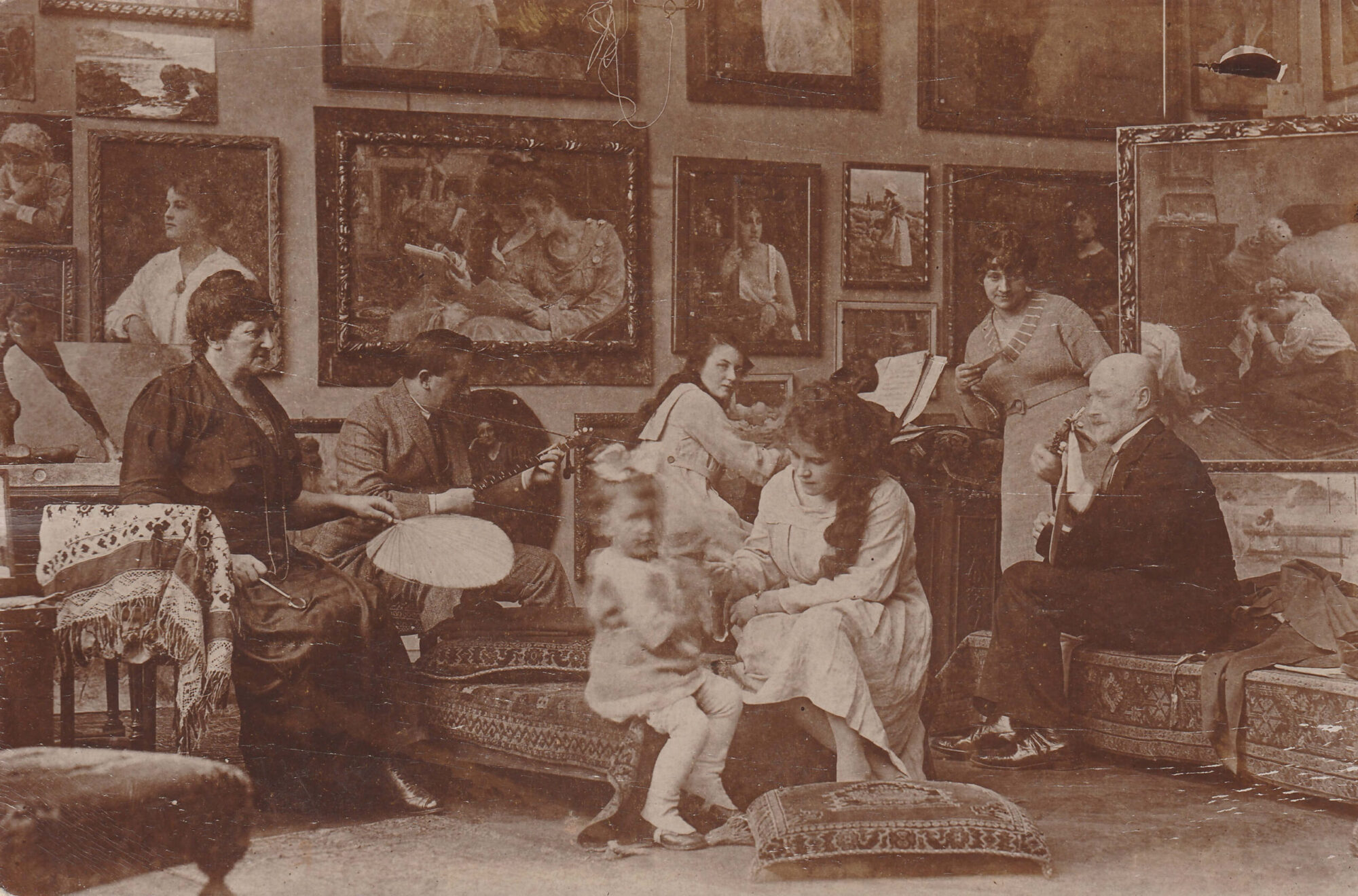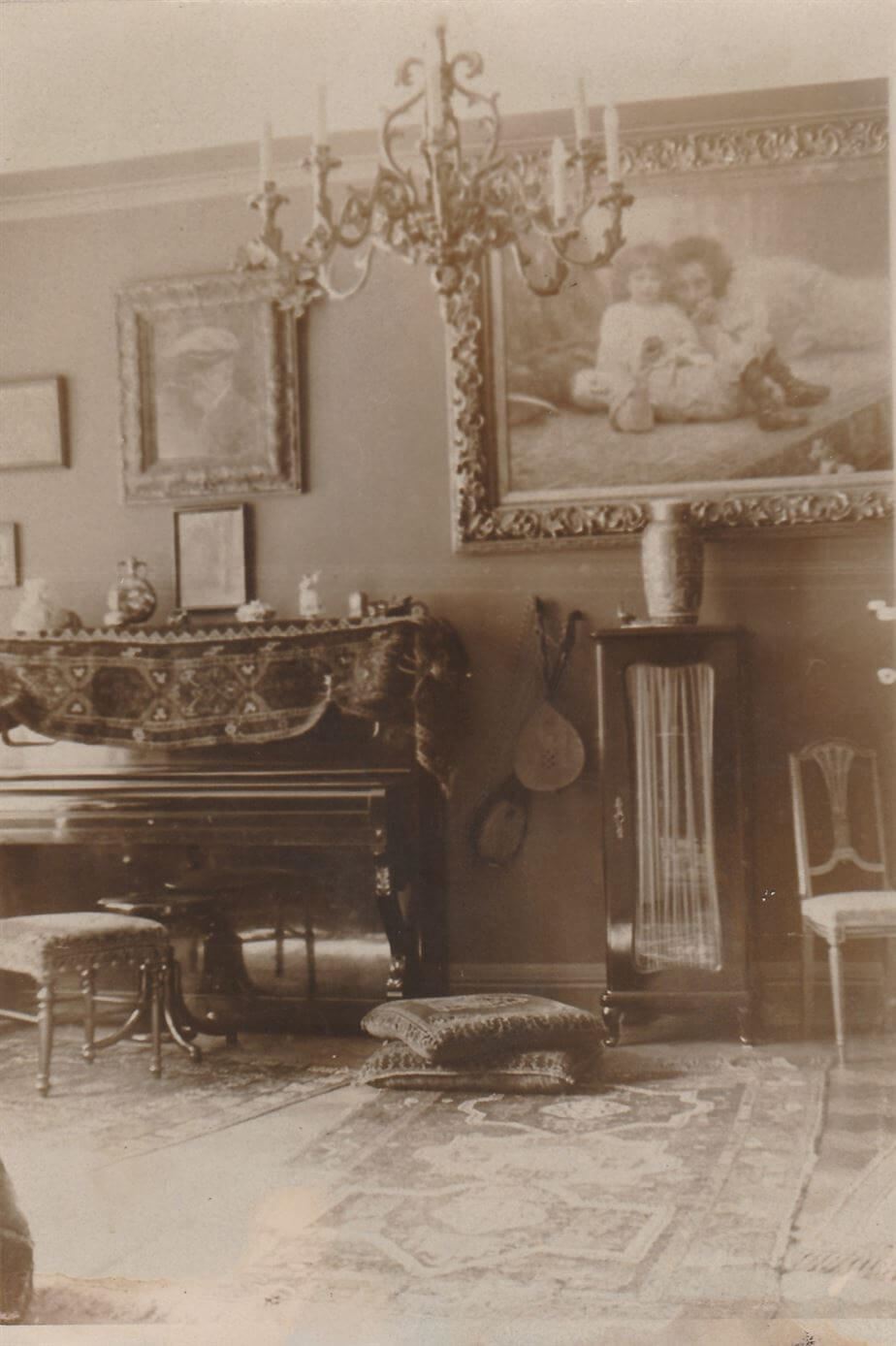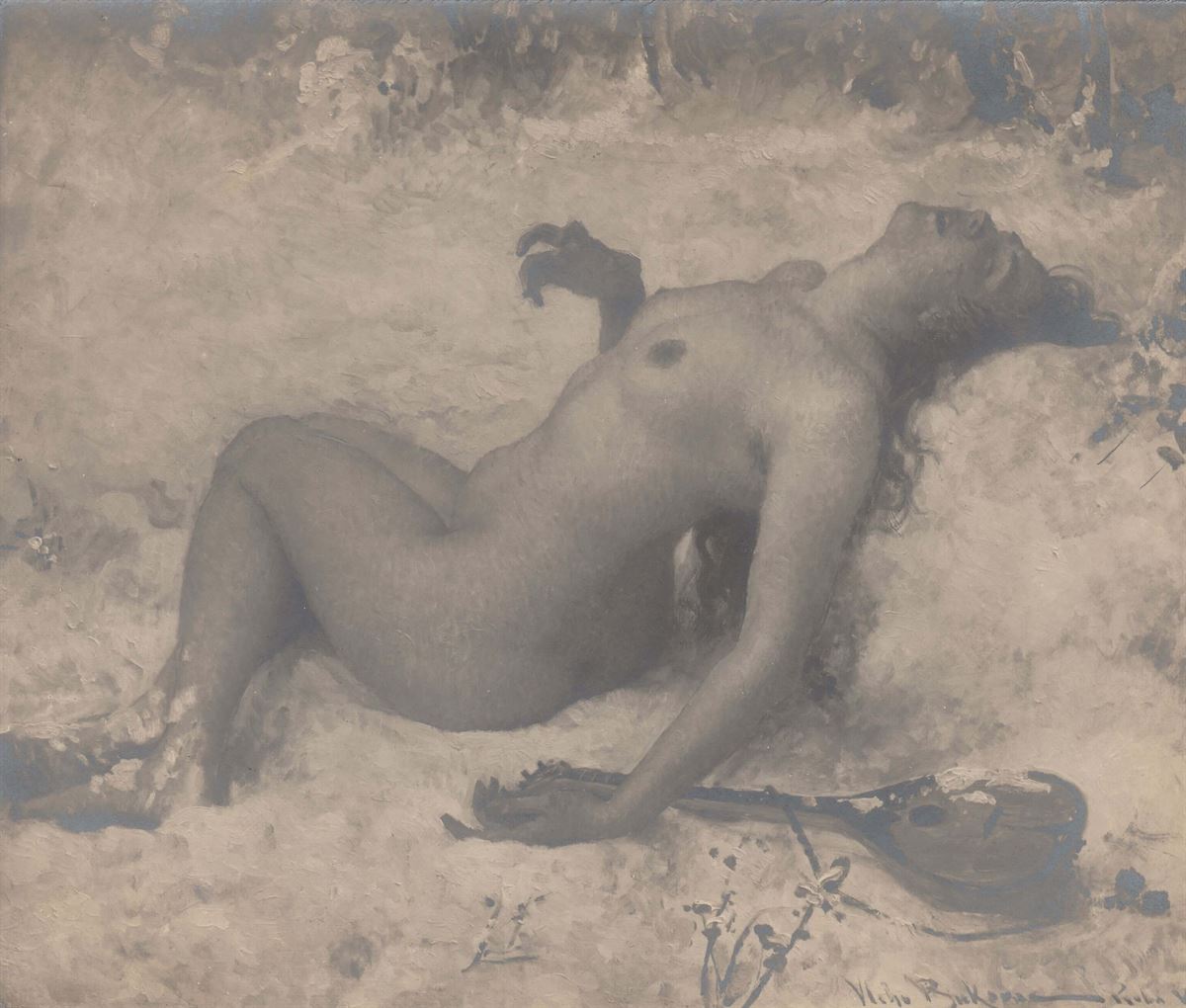tablica
| Inventory number: KB-709 |
| Material: wood, metal, mother-of-pearl, cotton |
| Dimensions: 86.5 x 21 x 12 cm |
| Dating: late 19th century |
| Made by: Terezija Kovačić instruments factory, Zagreb |
| Origin: Hrvatska |
Središnji sadržaj
Brač is a type of medium-sized tambura, with a semi-pear-shaped resonant body and a long neck with frets. It has four metal strings tuned to D. These instruments belong to the Farkaš system, sometimes also referred to as Croatian tamburas. As a holder, this brač has a tricolored woven strap with pom-poms at the ends. It was crafted by the tamburica maker Terezija Kovačić, whose factory was located at Ilica 47 since 1894. Vlaho Bukovac probably acquired it shortly thereafter, as in photographs from 1897 taken in his newly built studio in Zagreb, we see him playing this instrument. Bukovac has also portrayed himself, from behind and with brač, in the large composition Carnival in Epidaurus. He always carried brač with him, so in photos from his Prague studio, he is often depicted playing it. Vlaho Bukovac played several instruments.
His daughter Ivanka, in her manuscript Memories of My Father, notes: Besides painting, my father loved music the most, understanding it as a true artist. He did not have the opportunity to study any instrument formally, but he was self-taught in playing the tamburica, as well as the harmonium, and he also played a bit of piano. During his stay in Cavtat, he participated in the mandolin choir of the “Epidaurus” society, as he had previously done in Zagreb with an art society.


